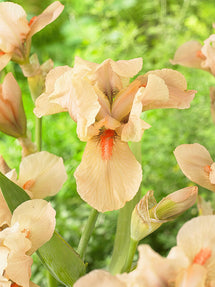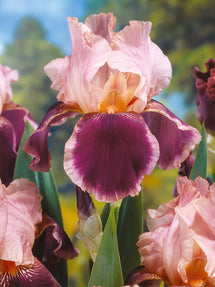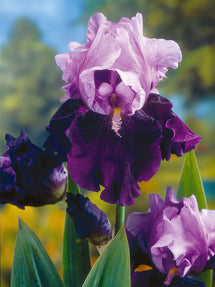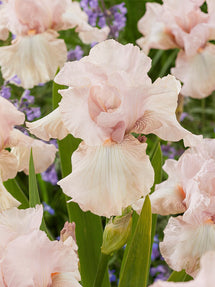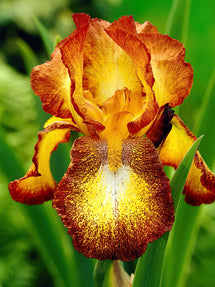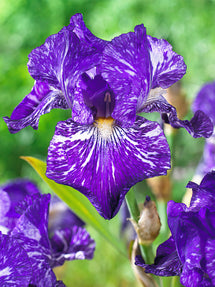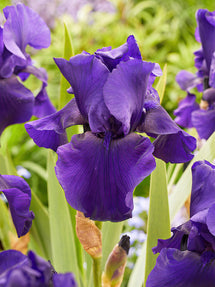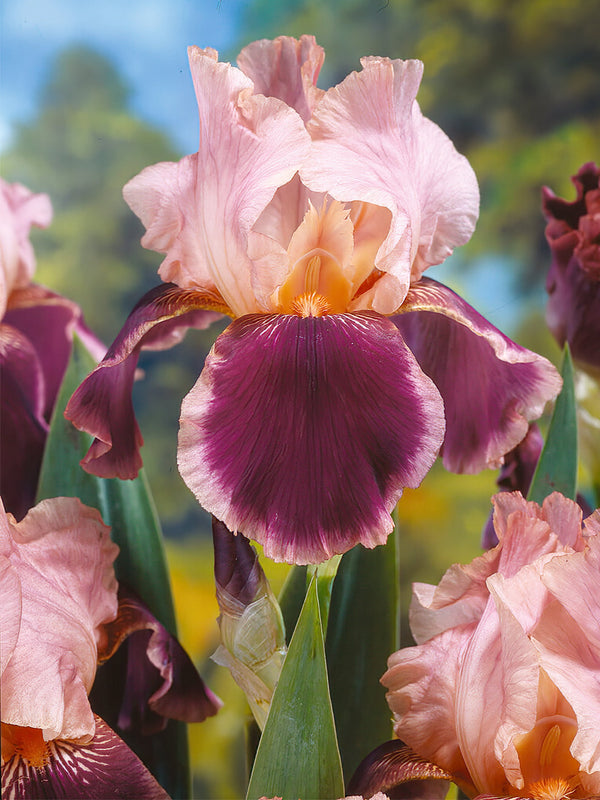Bearded Iris
Bearded Iris, scientifically known as Iris germanica, is a hardy perennial plant beloved for its striking flowers and easy care. It is named for the distinctive "beards" on its lower petals, known as falls, which feature fuzzy, caterpillar-like extensions that are often in a contrasting color.
Showing 1 - 7 in 7 items
Bearded Iris
Bearded Iris, scientifically known as Iris germanica, is a hardy perennial plant beloved for its striking flowers and easy care. It is named for the distinctive "beards" on its lower petals, known as falls, which feature fuzzy, caterpillar-like extensions that are often in a contrasting color.
The blooms of the bearded iris are composed of three upright petals called "standards" and three downward petals called "falls." The flowers come in a vast array of colors and patterns, including shades of purple, blue, yellow, pink, orange, brown, white, and even black, often with intricate veining or splashes of alternate colors, making them a painterly addition to any garden.
These flowers sit atop tall, sturdy stems that can rise above the clump of sword-shaped, green, or variegated foliage, making them a dramatic and elegant statement in spring and early summer landscapes. Bearded irises typically bloom in late spring to early summer, though some cultivars may re-bloom in late summer or fall.
Bearded irises prefer a sunny position in the garden with at least six hours of direct sunlight. They thrive in well-draining soil, as their rhizomes are prone to rot in overly moist conditions. The rhizomes should be planted shallowly, with the top exposed to the air, which is a unique planting requirement compared to many other perennials.
Caring for bearded irises involves regular watering during the growing season, especially during dry spells, but care should be taken not to overwater. After blooming, spent flowers should be removed, and the foliage should be left to gather energy for the next season. Once the foliage has yellowed in the fall, it can be cut back.
Every few years, bearded iris clumps should be divided to prevent overcrowding and to rejuvenate the plant, which encourages more vigorous blooming. This is best done a few weeks after blooming, typically in late summer.
Gardeners prize bearded irises for their dramatic flowers and their ability to create bold architectural statements in borders and beds. They are often used in classical and cottage garden designs and are an excellent choice for low-maintenance and drought-tolerant gardens. With their easy propagation through division and their long life in the garden, they are a cherished plant passed down through generations of gardeners.
